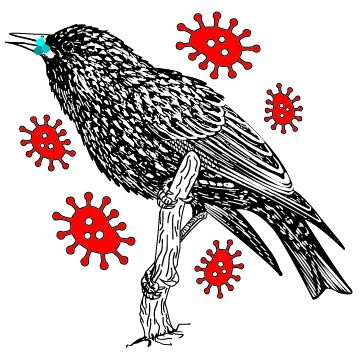A strain of bird flu, known as H5N1, has been identified in around 12,000 wild birds in the U.S. since 2022. Over 148 million captive birds have been euthanized since 2022 due to the virus.
In March 2024, it was reported that a different strain, the B3.13 bird flu, was starting to infect dairy cows. At the time of reporting, 968 affected herds have been detected in 16 states.
Until 2024, there was only one human case in the U.S. In March, the number jumped to 67, with one death. Cases mostly arose from people working with birds, poultry or cows. Another severe case was reported in December, in Canada.
Centers for Disease Control released a statement on Dec. 15, 2024, announcing that a Louisiana resident was confirmed to have a severe case of the D1.1-strain bird flu. Officials confirmed that the patient had contact with sick and dead birds in backyard flocks, although an investigation into the infection’s source in the state is still underway. According to a news release, this marks the first death in the U.S. from bird flu.
Bird flu has led to a wide variety of symptoms during recent outbreaks, including common flu symptoms like cough and vomiting. Many have also reported conjunctivitis or pink eye as their only symptom, which experts suspect is from contaminated milk from cows infected by bird flu being splashed onto workers.
“While the current public health risk for the general public is low, people who work with birds, poultry or cows, or have recreational exposure to them, are at higher risk. The best way to protect yourself and your family from H5N1 is to avoid sources of exposure,” Louisiana’s health department stated.
The CDC has said there remains “no evidence of sustained human-to-human” spread of H5N1. There are some past outbreaks overseas where the agency says “limited” H5N1 transmission is suspected to have occurred within small clusters of people.
Bird flu has had devastating effects on the prices of eggs in the U.S. In January, egg prices rose more than 15 percent from one year ago. EY Chief Economist Gregory Daco stated that the January surge “is likely a one-off.” However, millions of consumers are still facing higher food prices, both at home and in restaurants, due to record-high egg costs.
Most grocery stores have responded to the shortages by limiting how many eggs shoppers can buy at a time, and restaurants like Waffle House are adding surcharges on all orders that include eggs.
Egg prices are projected to increase by 20 percent in 2025, as reported by the U.S. Department of Agriculture. Despite the higher costs, consumer demand remains strong and could even grow as Easter approaches, leaving little room for relief in prices.
Experts say that for prices to stabilize, there are two requirements: the U.S. needs to control the bird flu, and older, less productive chickens, along with those affected by the disease, must be replaced. The timeline for this to happen is still uncertain.




